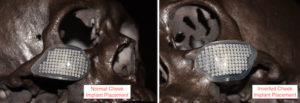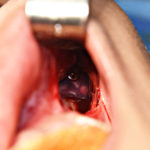Cheek augmentation is a common facial reshaping surgery that can be done by a variety of different methods. Temporary synthetic injectable fillers, fat injections and bone-based implants are available midface augmentation techniques, each with their own advantages and disadvantages. Surgeons may have their preferences but it is never such that one cheek augmentation methods works effectively in all patients.

Very relevantly, all current cheek impact styles are really made for the Caucasian patient, particularly that of females. This is understandable as the historic patient for cheek augmentation was female and the surgeons who designed the original cheek implants are Caucasian. But today’s patient population for cheek augmentation has expanded to all genders and ethnicities. Thus current cheek implants and what they can achieve dimensionally must take the gender and ethnicity of the patient into consideration.
This becomes extremely pertinent in the Asian patient whose midfacial bony anatomy is very different than of Caucasians. Many Asian patients have less forward projection of the midface and comparatively increased midfacial widths. This accounts for the popularity around the world of cheekbone reduction surgery. Any surgeon performing cheek augmentation in an Asian male or female must be very aware of their specific dimensional needs….which is best thought of as ‘high and anterior’ on the cheek. In other words more to the front of the midface than to the side.
With this understanding the real question in the Asian patient is whether this is best accomplished by the use of standard or custom cheek implants? If the patient does not want any infraorbital or midface augmentation effects (particularly along the infraorbital rim) then the use of standard cheek implants may be sufficient.



Dr. Barry Eppley
Indianapolis, Indiana



